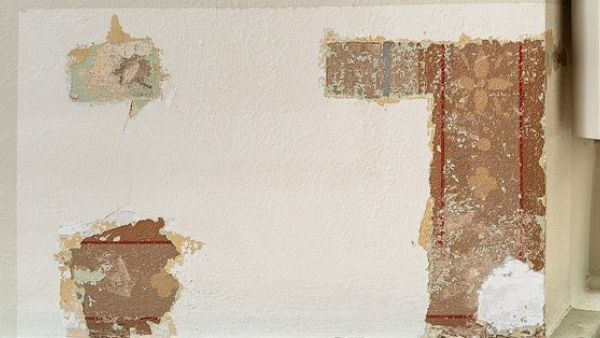Renovations at a former synagogue in Stockholm led to the discovery of exquisite 19th-century murals that had remained concealed under several coats of paint, rare examples of German-influenced synagogue art that were not destroyed by the Nazis.
The discovery was made during preparations for the reopening of Stockholm’s Jewish museum at what used to be the Tyska Brunnsplan Synagogue, the Swedish capital’s second Jewish house of worship. It had served as a synagogue for 80 years until 1870.
The reopening efforts, which began in 2016, entailed cataloging the museum’s collections. Curators found a scheme from 1811 detailing the murals that had decorated Tyska Brunnsplan Synagogue, Stockholm Direkt reported Monday. That blueprint informed renovators as to where they needed to carefully expose the artworks.
We were able to start exposing the surface carefully,” the website quoted Christina Gamstorp, the museum director, as saying. “It was like pulling off a curtain, suddenly a hidden Jewish cultural heritage asset emerged from underneath.”
{"preview_thumbnail":"https://cdn.flowplayer.com/6684a05f-6468-4ecd-87d5-a748773282a3/i/v-i-8…","video_id":"8797f0da-5f3f-4596-959b-0bb1185a01c0","player_id":"8ca46225-42a2-4245-9c20-7850ae937431","provider":"flowplayer","video":"Notre Dame Fire Reminds Syria, Iraq, Yemen of History Lost During War"}
One mural features 10 half arches with rosettes, painted with bronze paint with reliefs and deep shadows, as the blueprint describes it.
According to Gamstorp, the German-influenced murals are an extremely rare find because the Nazis destroyed most other synagogues with comparable decorations in Germany and beyond. Sweden was neutral during World War II and not occupied by Germany.
“This could be the only preserved synagogue with German decoration painting from the 19th century,” the museum said.
This article has been adapted from its original source.








